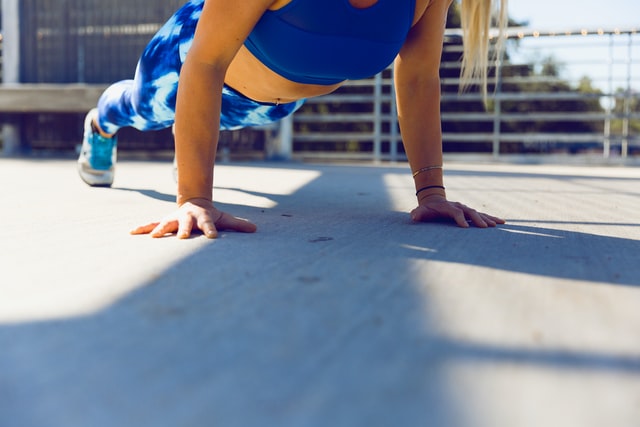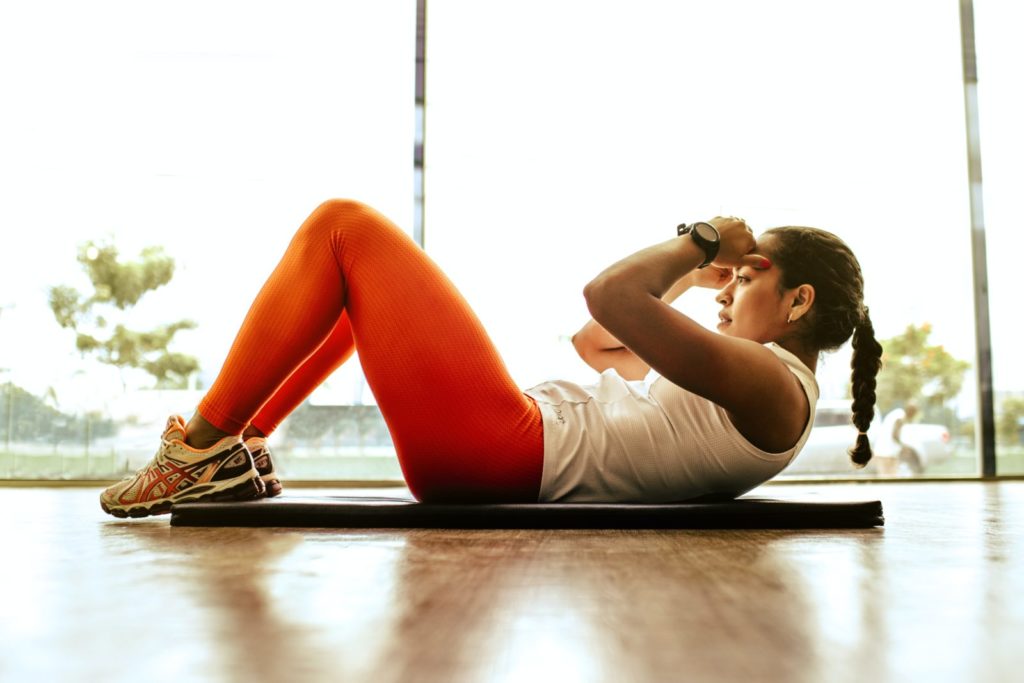.. and interact with your home and outdoor environment for a more active lifestyle that meets you were you are now.
Natural movement
Moving your body is crucial for good gut health. Deep movement of the diaphragm naturally stimulates peristalsis [the squishing of food through the gut] in the small intestine, helping to move the food through and on to the next stage of digestion.

The human body is designed to be active, strong and flexible.
The exercises I recommend – and have found most helpful in my own gut-health journey – are yoga and HIIT (high intensity interval training) – bear with me on this one…
High intensity interval training (HIIT) – awesome for digestion!

If HIIT sounds like rather too much effort, I sympathise. I didnt try it for a long time becuase I thought it would be ‘too hard’ – it made me tired just thinking about it! But actually, there are many free YouTube videos for beginners, and people with historic injuries.
It is absolutely possible to start gently. ‘High intensity’ is whatever feels like high intensity for you at your current fitness level.
Particularly if you have gut issues, you might struggle with fatigue, particularly after a meal. If this is the case, pick a time – perhaps before breakfast (if you can) to do a little bit of exercise. If you tend to get more tired in the afternoon, then try to fit in a quick workout before lunch. Remember, with HIIT, you can do quite a lot in just 10 minutes.
Getting into shape after a sedentary lifestyle
The key here is to take it slow, pay attention to any pain – and resist any urge to overdo it.
I emerged from the Covid pandemic extremely unfit owing to lack of exercise and a desk job… and I started with 10 minutes beginners HIIT ‘for moms’ a couple of times a week. I could barely walk for the few days after my first beginners HIIT, but soon improved. So stick with it!
The main positive in HITT’s favour is that it is an extremely time efficient way of improving strength, fitness and digestive function. Most HIIT workouts have a range of movements that exercise the whole body.
A typical workout [once you’re through the beginner stage] lasts 20-30 minutes.
The main benefits of HIIT:
- you get to stop and rest for a third of the time you’re working out (every 30-40 secs)!
- No equipment needed
- No special workout footwear needed [for low impact or abs only workouts]
- Free workouts online from 5 to 60 minutes [and everything in between]
- Knee-friendly, wrist-friendly, all-standing, low-impact, abs only options. You can always find one to fit around past injuries or weaknesses
- Takes around 20-30 minutes start to finish – so easy to fit into your day.
One note of caution: it is important to pay attention to ‘form’ [technique] when doing exercises like squats and lunges. Incorrect form [like the knee rolling inwards] can cause strain on joints and injury, so if you’re not sure what correct form is, google it, or better still, recruit a personal trainer for a few weeks and ask them.
With HIIT, you can even get a decent workout in as little as 10 minutes. Jump in the shower, and you’re done in 15 minutes without even leaving the house!
My personal favourites are Flexy and Fit workouts [lots of workouts suitable for dodgy knees] and fitbyMik.
Once you’re up and running [no pun intended!], you could try Heather Robertson and Growing Annanas.
I do 15-20 mins HIIT on most days as I find my digestion is less efficient if I don’t. Yes! It it has made that much of a difference…!
Strength with flexibility

Combining HIIT with yoga generates strength with flexibility, maintaining vitality as we move through life into our middle years and beyond.
I usually recommend at least 30 minutes yoga twice a week for improving digestive function.

DownDog is an excellent yoga app that I use because it allows sessions to be tailored to individual preferences. You can choose the length of the session, the level of difficulty, areas of focus [e.g. lower back stretch] and you can even choose the voice!
Benefits of exercise beyond improved digestion
Exercise is well known to improve mood and sleep. The increased muscle mass that comes with exercise [particularly if you incorporate weight-bearing exercise into your routine] can help with weight management by regulating appetite and improving energy balance management by the brain.
If you’re not sure what I mean, check out Why we eat (too much) by Dr Andrew Jenkinson. 90% of our body weight regulation is unconscious. Who knew? This information is a game changer if you have any issue with weight management.
It is this unconscious weight control that needs to be managed if we want to effortlessly regulate our body weight.
Spoiler alert: exercise and a vegetable-rich, unprocessed diet help – all things we promote as part of the Zenith Method. Processed foods and sugar derail this wonderful, natural weight regulation!

